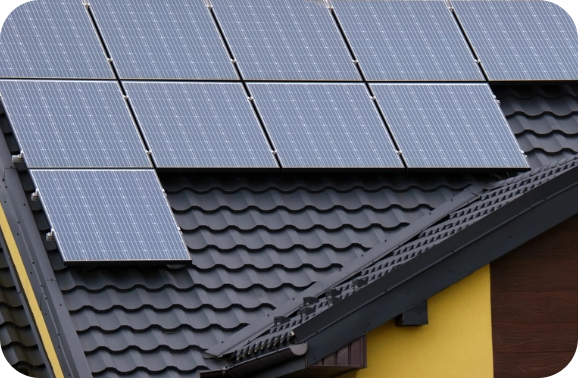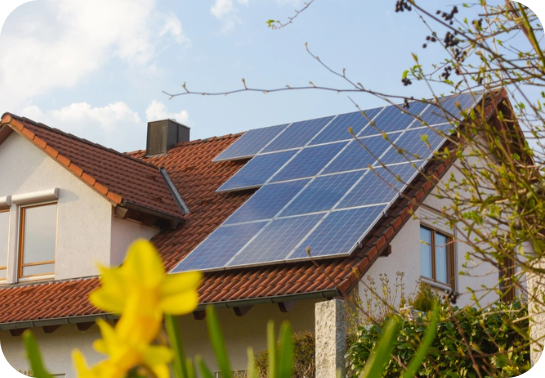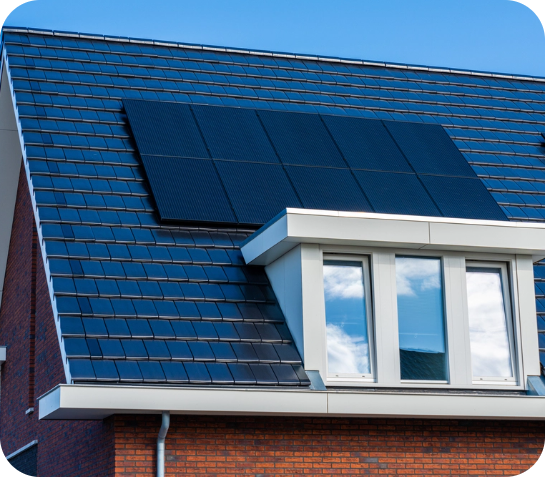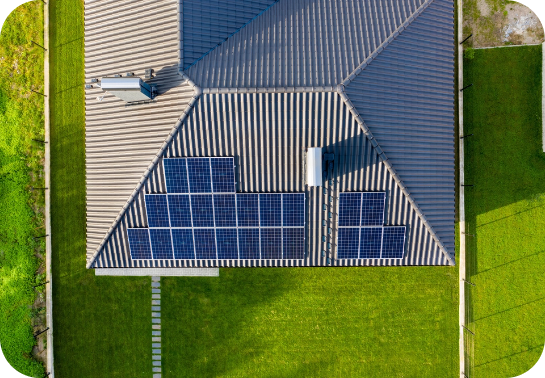What Are the Pros and Cons of Solar Shingles?

Solar power has been providing homes with a cost-efficient and sustainable source of energy for decades. All this time, solar panels have been the common equipment for solar power systems. However, today, there is another option in the form of solar shingles.
What Are Solar Shingles?
Solar shingles, as their name suggests, look exactly like standard roof shingles. They look like and function the same way as any other roof shingles made of asphalt or composite, with the additional feature of producing electricity. They have the same photovoltaic technology as rooftop solar panels, allowing them to absorb and convert solar power into electricity.
Solar shingles are a “new” technology. While solar panels have been around for decades, solar shingles, or “the solar roof,” were just introduced in 2009 by DOW Chemistry Company. One of the recent developments in the industry was Tesla’s introduction of its solar shingles, the Tesla Solar Roof Tiles, in 2016.


What Do Solar Shingles Cost?
Solar shingles cost significantly more than regular roof shingles, as they can provide solar power to your home. Compared to solar panels, a solar shingles installation also costs more. Solar shingles may cost 15% to 25% more than traditional solar panels or between $25,000 to $60,000. The price, of course, varies with the brand, as some might cost around $70,000, like the Tesla Solar Roof.
Solar Shingles vs. Solar Panels
You can never go wrong with getting a solar energy system for your home. Aside from a reduced carbon footprint, solar power can also provide a reliable and cost-efficient source of electricity.
Solar shingles are another option for anyone who plans to switch to solar power. But, as a newer technology in the market, how do solar shingles fare compared to solar panels?
What Are the Advantages of a Solar Roof?
Solar shingles are fairly new to the market, yet more people are attracted to this innovation due to its appearance and utility.
What Are the Disadvantages of a Solar Roof?
Solar shingles may seem ideal for those who want to switch to solar power. Still, it is also important to consider the disadvantages of having a solar roof, particularly compared to traditional solar panels.


Should You Replace Your Roof with Solar Shingles?
Solar shingles are indeed a great innovation. They provide a mix of modern solar power and traditional aesthetics. However, if you are considering using solar shingles for your roof, it would be best to remember your purpose for purchasing a solar power system.
The appearance of solar shingles comes at a price. When it comes to generating power, solar shingles may be less efficient than traditional solar panels as their design can hinder the performance of the solar power system. They provide protection for your home like regular solar shingles, but they may have lower energy production than traditional solar panels.
If you are purchasing solar shingles to provide an alternative power source for your home, consider the trade-off between appearance and performance. Solar shingles tend to cost more while generating less energy. Yes, you are getting a more aesthetically appealing design, but you might be sacrificing output, which also affects your savings. Remember, the more efficient your solar power system is, the more you can save.
Overall, solar shingles are an innovative technology, though solar panels are still the more efficient and effective option.
How Many Solar Shingles Would You Need?
The overall cost of installing solar shingles differs from household to household, as the number of solar shingles depends on the household’s utility needs.
Following these steps will estimate how many solar shingles you will need and, more importantly, how much it will cost. Although, it is still best to get a professional estimate to get a more accurate computation. This gives you the number of solar shingles you need to supply your household’s daily electricity needs.

Get in Touch with an Axia Solar Installer in Your Area
The main purpose of solar power systems is to help you and our environment by providing a cost-effective and sustainable energy source. Solar panels are a cost-efficient and environment-friendly energy source, and they are just a few clicks away. Visit our website to get in touch with one of our experts, and we will help you get started with your solar power system!